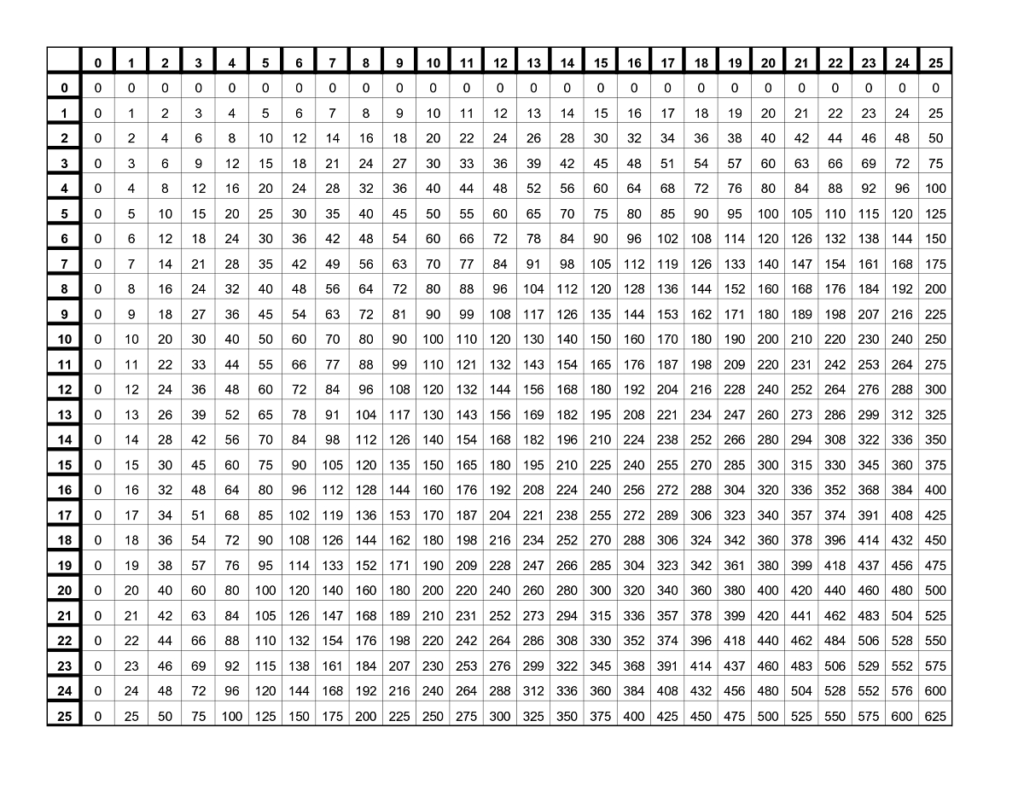
The main standard for mathematical practice which aligns with this task is The first non-prime number not appearing in the table is $22 = 2 \times 11$, the product of the smallest prime number with the smallest prime number bigger than 9. This makes sense in the context because a prime number cannot be written as a product of two smaller whole numbers. The last part of this question gives an opportunity for the teacher to discuss prime numbers since the list of numbers the students produce will all be primes. Working through the table to see where different numbers appear, the students will have a good opportunity to observe the symmetry of the table which comes from the commutative property of multiplication: $a \times b = b \times a$.

For example, 24 appears 4 times in the table:Ģ4 = 3 \times 8 = 8 \times 3 = 6 \times 4 = 4 \times 6.įor the 9 by 9 multiplication table shown, only the numbers 1 through 9 appear with all of their factorizations. The table shows some, but not necessarily all, factorizations of different numbers. You can use the "Generate" button to generate a new practice set.The goal of this task is to encourage students to study the multiplication table, a familiar object, from a novel point of view. Once you are done, simply use the check button to check your answers. Generate unlimited examples for 15 times tables chart and complete the answers. Practice your skills online with the examples below.

You should also practice the examples given because the best way to learn is by doing, not memorizing.

15 Times Tables Chartġ5 Multiplication Table is an useful table to remember to help you learn multiplication by 15. You can use 15 multiplication table to practice your multiplication skills with our online examples or print out our free Multiplication Worksheets to practice on your own. The 15 times table chart is given below to help you learn multiplication skills.


 0 kommentar(er)
0 kommentar(er)
